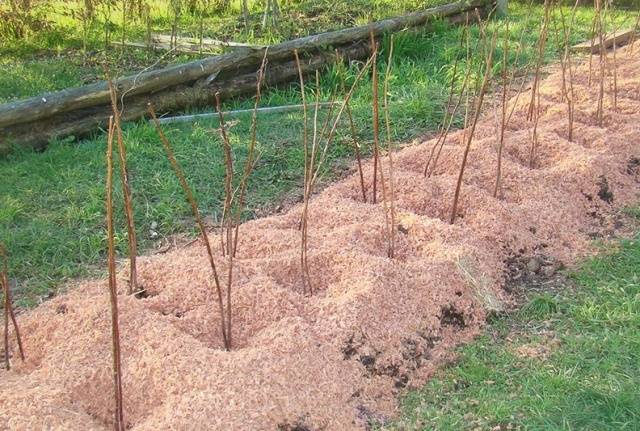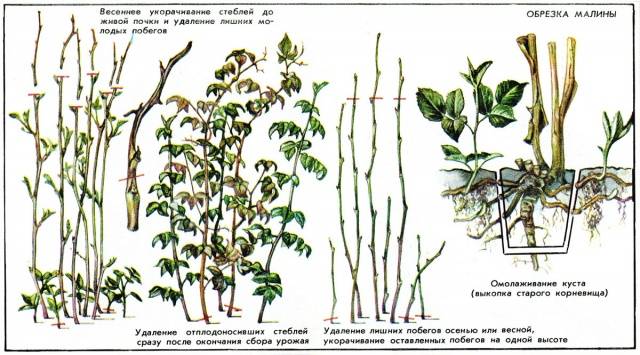Content
The new Altai variety of non-remontant raspberry Mishutka can rightfully be called one of the most controversial. Although these raspberries are very popular among summer residents and gardeners in the country, many avoid them due to the large number of fakes and a whole stream of false information. Advertising, of course, is the engine of trade, but in this case, it only harms: the Mishutka variety actually has many advantages; it does not need unnecessary praise (especially far from the truth). Farmers love the Altai variety for its unpretentiousness, excellent ability to adapt, generous yields and rich taste. Mishutka also has other valuable qualities, but over the years of selection only one drawback has been identified - the not very large size of the berries.
Photos, description of the variety, reviews and characteristics of Mishutka raspberries: comprehensive information is collected in this article. And here we will talk about the secrets of growing Altai raspberries and how to best care for them.
Characteristics and Features
The character of the Mishutka raspberry can be safely called Siberian: this variety is able to grow and develop in almost any conditions. That is why Mishutka is recommended for growing in regions with difficult climates, where winters are the coldest and longest.
The history of selection of the new Altai raspberry variety begins in the 60s of the last century. It was at this time that scientists from the Gorno-Altai Institute named after M.A. Lisavenko set themselves a complex and difficult task - to green the harsh regions of Altai and Siberia and plant them with blooming fruit and berry crops.
Later, the baton was taken up by a scientist from the same region, V.M. Zeryukov, who authored and developed the most famous varieties of raspberries and other berry crops in the 20th century.
It was possible to obtain Mishutka after crossing two outstanding thornless varieties: the Altai raspberry Blestyaschaya and the large-fruited brainchild of Kichina, Stolichnaya. As a result, Mishutka adopted all the strong qualities of its “parents”: the absence of thorns on the shoots, large berries, suitability for growing in difficult climates.
Qualities and external signs
The description of the Mishutka raspberry variety is often distorted for advertising purposes. Although, if you plant a real seedling of this hybrid, you can be convinced that the Altai species really has a lot of advantages.
Characteristics of Mishutka from the copyright holder:
- raspberries are not of a remontant type, they bear fruit on last year’s shoots;
- the timing of berry ripening is very dependent on the climate (in the south the variety is considered super early, in the center and north of the country raspberries ripen medium early);
- fruiting is extended - harvesting can take several weeks;
- the standard height of the bushes is from 140 to 180 cm, the plant is compact (the habit of raspberries is very dependent on the degree of moisture, soil composition, amount of fertilizing, weather conditions);
- Mishutka’s shoots are powerful, thick, and not prone to breaking off, as they are sufficiently flexible;
- there are no thorns or waxy coating on the bark - the shoot is smooth, velvety to the touch, with a slight fluff (the pubescence protects the raspberry stem from drying out under the scorching sun and does not allow pests to penetrate inside the shoot);
- the surface of Mishutka stems is not prone to cracking;
- there are many internodes on raspberry shoots, which guarantees the growth of a large number of fruit branches;
- the thickness of the laterals (fruit-bearing shoots) is large, so they do not break and hold the harvest well;
- the length of the laterals is usually 30-35 cm, each of these shoots contains from 15 to 20 ovaries;
- replacement shoots (in simple terms, shoots) are not too abundant, which makes it possible to propagate the Mishutka variety without problems, without having to fight the growth of the bush all season long;
- berries on the same cluster do not ripen at the same time;
- the shape of the Mishutka fruit is round, spherical;
- raspberries are painted in a rich scarlet shade;
- the average fruit weight is 3-4 grams, sometimes raspberries grow up to 6-7 grams;
- drupes of medium density, Mishutka berries do not crumble or “flow” after picking;
- The taste of the Altai variety is the most standard: raspberry, with a good balance of acid and sugar, a pleasant aroma;
- the pulp is very dense, although juicy;
- The transportability of the Mishutka harvest is very good - the harvest does not spoil for a long time, it can be stored for several days and, without fear, transported over long distances
- The yield of the Altai Mishutka is very decent - about three to four kilograms from each bush (at the same time, gardeners claim that these figures can easily be raised to seven kilograms if you fertilize the raspberries more abundantly and regularly water the bushes).
Adaptation and resilience
Malina Mishutka is a real Siberian fighter, because in the harsh climate it is impossible to do otherwise. Moreover The variety receives positive reviews from farmers from all over the country: from north to south. All this is thanks to the excellent adaptive qualities of the Mishutka variety - this raspberry can take root in almost any climate.
The Altai variety has very good frost resistance, The shrub can easily withstand up to -35 degrees without any shelter. Of course, in regions with harsher winters, it is better to bend the bushes to the ground and cover them with snow - it’s safer.
Mishutka has several more important abilities:
- the shrub tolerates interseasonal and winter drying by winds;
- does not freeze slightly after short-term thaws;
- rarely weathers out in early spring conditions.
The advantages of the Mishutka variety do not end there, this raspberry is also very resistant to various diseases and pests. The list of diseases and insects that are not terrible for Siberian raspberries is simply impressive, because they are not dangerous for Mishutka:
- shoot aphid
- spider mite
- mosaic
- spotting
- growth
- shoot gall midge
- gray rot
- fungal infections of leaves and stems.
Correct fit
There are legends about the unpretentiousness of Mishutka - raspberries, indeed, can be cultivated in different climates, on any soil. Like any berry crop, raspberries will not tolerate the following:
- wetlands;
- areas with regular floods;
- close location to the surface of groundwater.
The culture intended for Siberia and Altai should also be protected from the scorching heat. There is no need to plant raspberries on the south side of a slope or where the soil is rich in sand. In such conditions, the bushes will require mulching, shading, and regular watering.
In the central part of Russia, Altai and Siberia, Mishutka raspberries are planted in the fall. Since the variety has good winter hardiness, it is best to do this in the last days of September. Bushes with a closed root system can also be planted in the spring.
Before planting, holes or trenches are generously filled with fertilizers. For the variety in question, well-rotted organic matter (compost, humus, aged manure, old bird droppings), diluted with several handfuls of wood ash, is most suitable. You should not pour fresh manure, peat or sawdust into the hole - all this will begin to rot and take away all the nitrogen from the growing raspberries.
After planting, the bushes are watered abundantly and the soil must be mulched with a thick layer of organic mulch.
Need for care
Practice shows that the Mishutka variety will not deprive the gardener of a harvest even with minimal care. If the summer resident does the simplest thing - trim the raspberry tree once a year and tie the shoots to the supports - he will still remove about 2-3 kg of berries from each bush.
If the goal is to increase the productivity of Mishutka and grow larger berries, It is recommended to do the following:
- In autumn, spring and mid-summer, the bushes are thinned out so that the raspberries do not get sick and are well ventilated. At this time, old, diseased, dry shoots are removed, excess leaves are torn off, and shoots are cut out.
- Mishutka raspberries are pruned at least once a year. It consists of cutting out old fruit-bearing shoots, shortening green young branches and removing excess growth. It is better to prune raspberries in the spring, but you can do this twice a year. The cutting diagram is shown in the photo below.
- It is not necessary to spray the bushes, since the only pest that poses a danger to the Siberian Mishutka is the raspberry beetle, the larvae of which eat ripe berries.
- Annual mulching of the raspberry tree significantly increases the chances of a bountiful harvest, protects the roots from temperature fluctuations and the soil from drying out.
- At least three times during the summer you need to water the bushes with plenty of water.
- In spring, raspberries must be tied up so that the flexible shoots do not bend toward the ground. Bushes tied to supports or trellises are better ventilated and receive more sun.
- Mishutka will not freeze even in the harshest winter, but the yield of an uncovered bush will be greatly reduced. Therefore, in the Siberian regions it is necessary to tie the shoots of this raspberry and bend it to the ground with subsequent shelter.
Review
Conclusion
Raspberry Mishutka is perfect for farmers; the crop can be grown on any scale. The berries tolerate transportation well, do not leak or wrinkle for a long time. It is best to use a bountiful harvest for processing, since fresh fruits have a pleasant, but rather “bland” taste, without any “zest.”
Summer residents living in difficult climatic conditions should not forget about this variety. There Mishutka shows herself at her best, pleasing with her resistance to cold and good immunity.





















